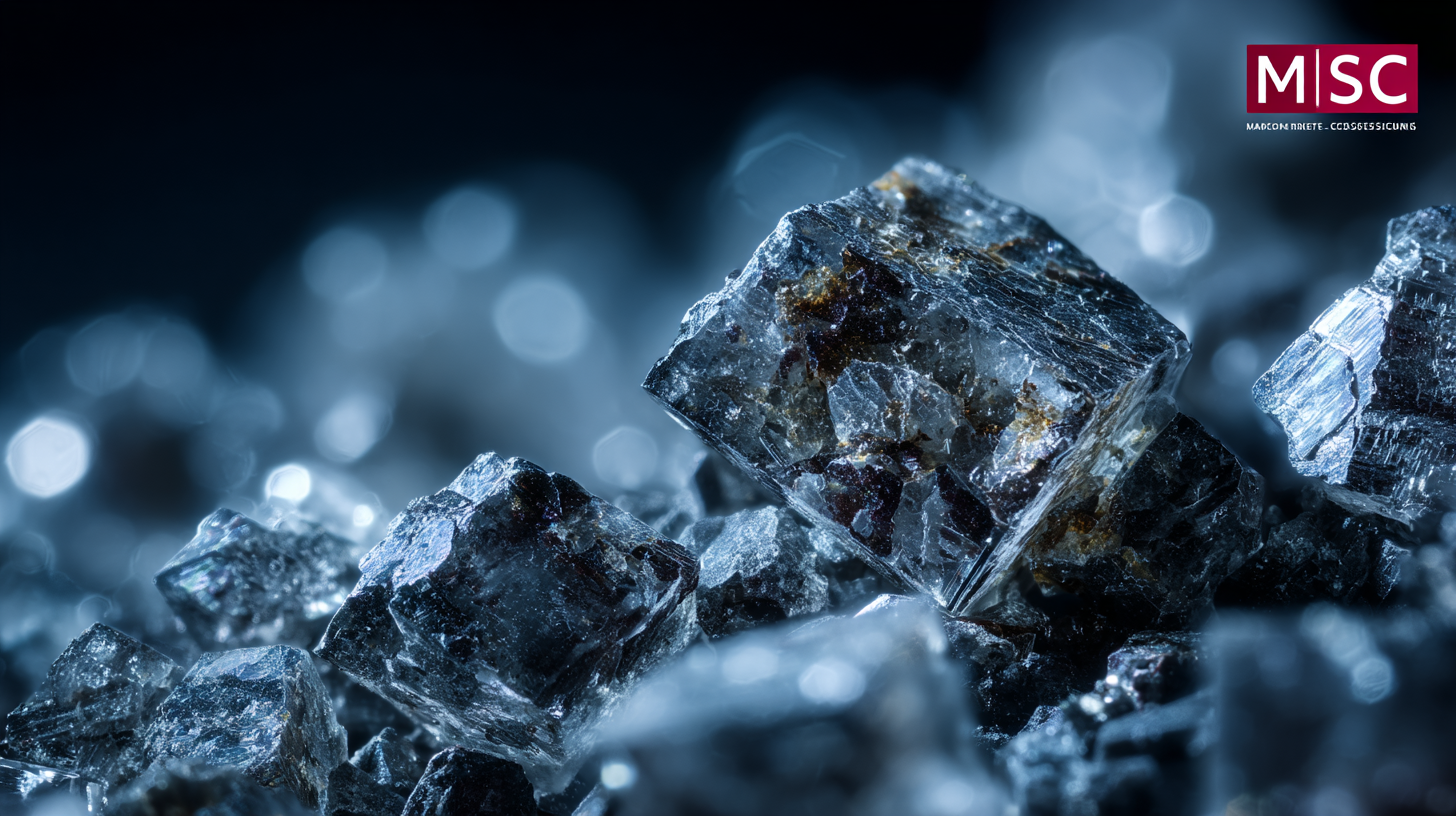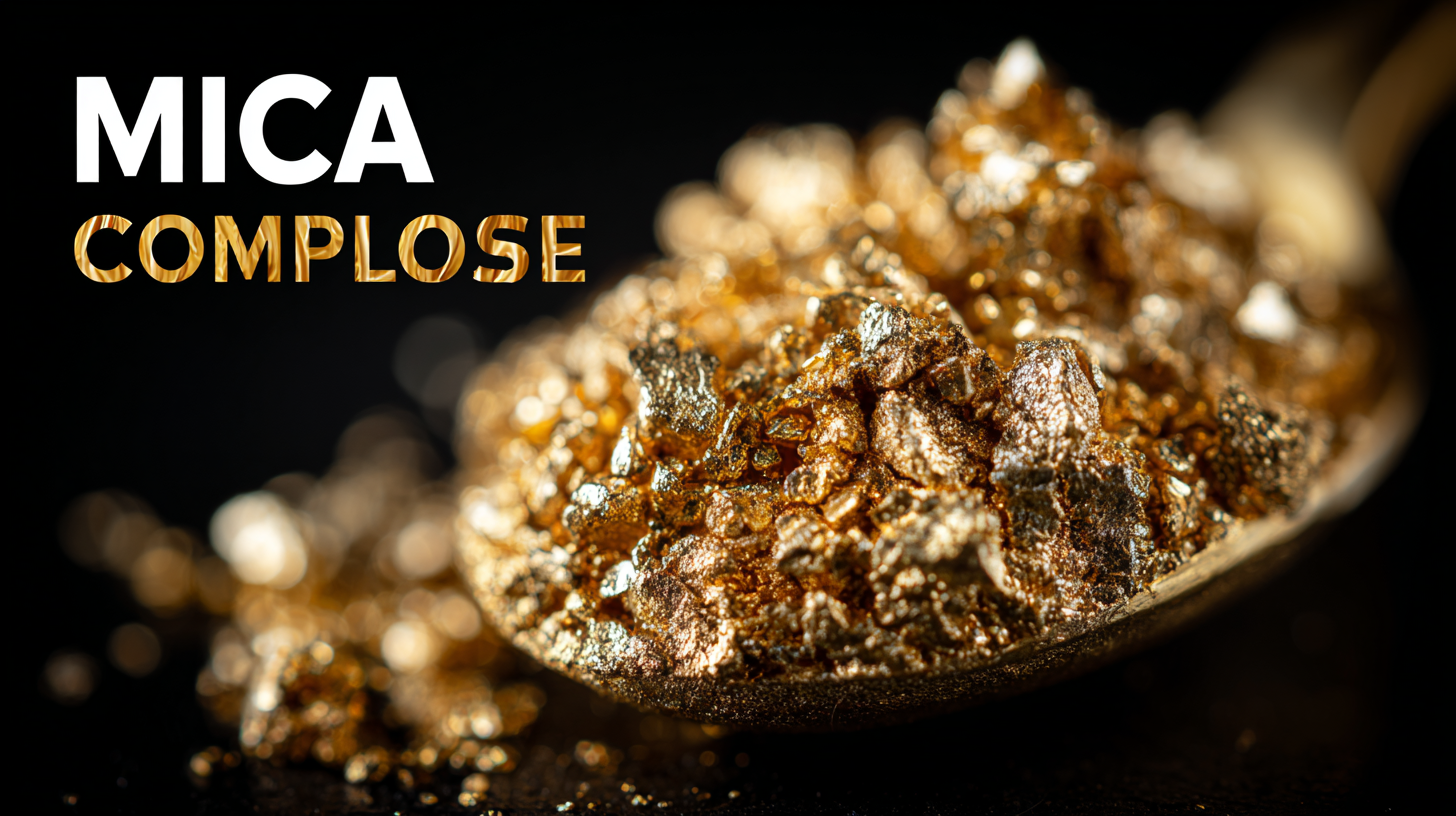QR Code
About Us
Products
Contact Us

Phone

Fax
0086-574-87527773

E-mail

Address
No 432 Zhenhai Middle Road, Luotuo Street, Zhenhai District, Ningbo City, Zhejiang China
In the rapidly evolving landscape of global markets, the demand for high-quality materials and innovative solutions is more pressing than ever, particularly within the mica composite industry. According to a recent report by Market Research Future, the mica market is projected to witness a compound annual growth rate (CAGR) of 5.2% from 2021 to 2027, driven by its increasing applications in industries ranging from electronics to construction. Strategically sourcing the best mica composites has become essential for businesses looking to maintain a competitive edge, as these materials not only offer superior insulation properties but also enhance aesthetic appeal. As companies seek to optimize their supply chains, understanding the latest market trends and insights surrounding mica composites will be crucial for making informed procurement decisions that align with both current and future demands.

 As the globalization of markets continues to evolve, the sourcing of mica composites in 2025 will be significantly influenced by emerging trends. The global mica composite market is witnessing a surge, driven by increased demand for high-quality mineral fillers. According to Fact.MR, the mineral fillers market is projected to reach a valuation of USD 28.4 billion by 2025. This growth highlights the crucial role that mica composites are playing in various industries, including construction and automotive, where they are used for their lightweight and durable properties.
As the globalization of markets continues to evolve, the sourcing of mica composites in 2025 will be significantly influenced by emerging trends. The global mica composite market is witnessing a surge, driven by increased demand for high-quality mineral fillers. According to Fact.MR, the mineral fillers market is projected to reach a valuation of USD 28.4 billion by 2025. This growth highlights the crucial role that mica composites are playing in various industries, including construction and automotive, where they are used for their lightweight and durable properties.
Additionally, the focus on sustainability and eco-friendly materials is reshaping sourcing strategies. The electric vehicle (EV) sector, in particular, presents new opportunities for mica composites, especially in fire protection applications for batteries. As safety remains a priority, suppliers need to adapt to these market shifts by sourcing materials that meet stringent regulatory standards while also offering innovation in their fire protection solutions. The interplay of these diverse trends underscores the strategic importance of mica composite sourcing in 2025 and beyond.
Mica composites are increasingly recognized for their versatility and performance across various industries, driving significant demand in the global market. According to a recent report by Grand View Research, the mica market is projected to reach USD 1.78 billion by 2025, growing at a compound annual growth rate (CAGR) of over 4.25%. This growth is largely attributed to their applications in electrical insulation, automotive, and cosmetic products, where mica’s thermal resistance and electrical properties are critical. For instance, in the automotive sector, the increasing focus on lightweight and fuel-efficient vehicles is prompting manufacturers to incorporate mica composites into their designs.

Several key factors are fueling the demand for mica composites. The rise in renewable energy projects, particularly in wind and solar installations, necessitates materials that can withstand harsh environmental conditions while maintaining performance standards. The mica composites market is expected to benefit from the adoption of stringent regulations regarding fire safety, which mandates the use of non-combustible materials in construction and insulation applications. Furthermore, the global push towards sustainable and eco-friendly products is leading to an increased preference for natural minerals like mica, which can be sourced responsibly. According to an analysis by Mordor Intelligence, the growing awareness around sustainable materials is expected to accelerate the demand for mica composites across various sectors, highlighting their crucial role in the future of material science.
Sustainability in mica production has become a critical focus as global demand rises, particularly from sectors such as cosmetics and electronics. Chinese manufacturers are increasingly under scrutiny to adopt environmentally friendly practices and ensure ethical sourcing of this essential mineral. While the mica market is projected to experience steady growth through 2035, the challenges remain significant, especially concerning child labor and environmental degradation linked to mining practices.
Recent reports highlight the troubling conditions in mica production, particularly in regions like Madagascar, where child labor is rampant. As consumers become more aware of these issues, the spotlight is on manufacturers to implement sustainable practices. It is crucial for companies to not only abide by fair labor standards but also invest in community development to combat poverty and promote alternative livelihoods. As brands explore their sourcing strategies, transparency and responsible production will be essential in securing consumer trust and advancing sustainability in the mica supply chain.
In the rapidly evolving landscape of global markets, efficient sourcing strategies for mica composites are essential for optimizing supply chains. Mica, prized for its unique properties in various industries, requires a strategic approach to ensure a reliable supply while balancing cost and quality. Companies must prioritize transparency in their supply chain to foster trust and accountability with suppliers.
Another effective strategy is to diversify sourcing options. Relying on a single supplier can pose risks, especially in unstable markets. By exploring multiple suppliers across various regions, businesses can mitigate disruptions and tap into new innovations or pricing models that enhance their competitiveness.
As we approach 2025, the landscape of mica composite applications is set to transform significantly, driven by innovations and emerging market trends. Mica composites, known for their excellent thermal and electrical insulating properties, are gaining traction in sectors such as electronics, construction, and automotive. According to a recent report by MarketsandMarkets, the mica market is projected to reach USD 1.44 billion by 2025, with a compound annual growth rate (CAGR) of 4.2% from 2020 to 2025. This growth is fueled by the increasing demand for lightweight materials that enhance product performance while optimizing manufacturing processes.
Innovations in mica composites are expanding their applicability beyond traditional uses. For instance, new formulations are being developed to improve durability and resistance to harsh environmental conditions, particularly in the automotive sector. As per a study by ResearchAndMarkets, the rise of electric vehicles (EVs) is anticipated to increase the demand for advanced composite materials, which incorporate mica for heat resistance and lightweight properties. The integration of sustainable practices in production also presents an opportunity for suppliers to differentiate themselves in a competitive market, aligning with global trends toward eco-friendly materials.
This chart illustrates the projected market growth for different applications of mica composites in 2025, highlighting significant opportunities in sectors such as automotive, electronics, and cosmetics.


0086-574-87527773


No 432 Zhenhai Middle Road, Luotuo Street, Zhenhai District, Ningbo City, Zhejiang China
Copyright © 2015-2024 Ningbo Nafty Sealing Materials Co., Ltd. All Rights Reserved.
| | | XML | Privacy Policy |
TradeManager
Skype
VKontakte
